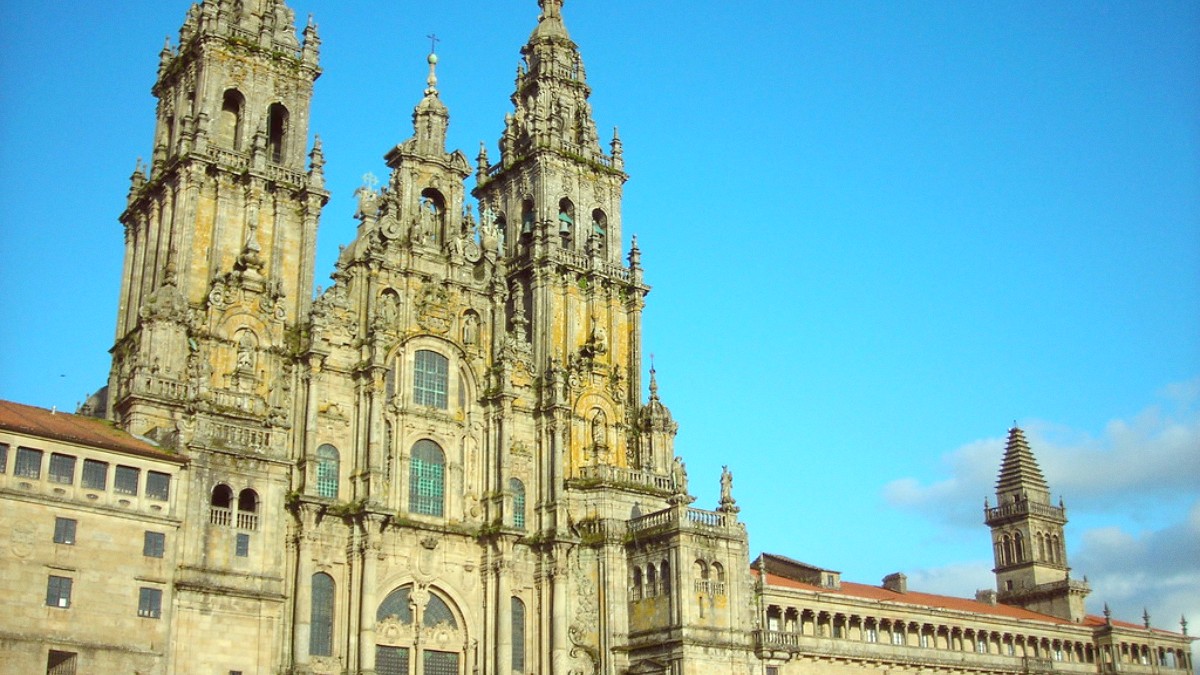
Santiago De Compostela Cantabria Asturias And Galicia, Spain Travel Guide
Galician cooking emphasizes freshness and quality. Seafood like octopus, scallops, and mussels, along with meats like Galician veal and pork, form staple ingredients. Dairy products, notably Tetilla and Arzúa-Ulloa cheeses, are local favorites.
Common flavors come from garlic, onion, paprika, olive oil, and bay leaves. Simplicity in preparation allows the natural taste of ingredients to shine.
Lunch (almuerzo/comida) is the main meal (14:00-16:00). Dinner (cena) happens later (21:00 onwards). Many restaurants close between lunch and dinner service.
Tapas are small portions, often eaten standing. The "Menu del Día" (menu of the day) is a common, excellent-value fixed-price lunch menu, typically including courses, bread, and a drink.
Ordering several dishes to share (para compartir) is common. Bread usually comes with meals and may appear as a separate charge. Formal table service is typical in restaurants.
Boiled octopus, simply seasoned with olive oil, coarse salt, and paprika. Served on a wooden plate, often with boiled potatoes.
Found in pulperías and traditional Galician restaurants.
A savory pie with a flaky crust, typically filled with tuna, cod, or minced meat, often with peppers and onions.
An excellent quick snack or light meal, available in bakeries and cafes.
Small green peppers, flash-fried in olive oil and sprinkled with coarse sea salt. Beware: some can be spicy!
A popular tapa, found in most tapas bars and restaurants.
Galicia's famous crisp white wine (Albariño) and a distinct regional wine (Ribeiro), perfect with seafood.
The iconic almond cake with the cross of Saint James. Filloas are thin Galician crepes, often with honey or cream.
Experience innovative Galician cuisine with Asian influences at Casa Marcelo (1 Michelin Star). O Curro da Parra also presents high-quality modern Galician cuisine.
O Gato Negro, a bustling restaurant, is popular for its fresh seafood. A Taberna do Bispo serves traditional Galician food in a cozy setting. Casa El Morro is known for generous portions.
Mercado de Abastos (Market) stalls offer incredibly fresh seafood. Numerous small Tabernas & Taperías provide tapas and raciones at reasonable prices. Bocadillerías offer hearty sandwiches.
The central municipal market, a must-visit. It serves not just as a place to buy ingredients but also as a fantastic spot to eat fresh seafood cooked on the spot.
Offers a truly authentic and lively atmosphere, notably on Saturday mornings.
While Galician cuisine dominates, Santiago presents Italian, Asian, and other international cuisines.
Find these options specifically in the Ensanche area, providing variety for different tastes.
Becoming more common in modern restaurants and cafes. Use apps like HappyCow.
Awareness is growing. Communicate clearly in Spanish ("sin gluten"). Supermarkets stock GF products.
Limited options. Consider vegetarian or self-catering from supermarkets.
Learn basic Spanish phrases for dietary needs ("Soy vegetariano/a", "No puedo comer gluten").
Choose fresh seafood from a stall and have it cooked on the spot at one of the market's eateries.
This provides an authentic, lively, and delicious experience.
Immerse yourself in the lively atmosphere of a traditional tapas bar, hopping from one to another.
Sample many different small dishes and enjoy the social aspect of Spanish dining.
Guided tours provide insights into local gastronomy and history, visiting the Mercado de Abastos, various tapas bars, and traditional restaurants.
During Carnival (Entroido), enjoy Lacón con Grelos, filloas, and orellas (fried pastry "ears"). Christmas features seafood, cod dishes, and specific festive desserts.
Some private chefs or culinary schools present Galician cooking classes. These often focus on seafood preparation or traditional dishes like empanada.
Guided walking food tours explore Santiago's culinary scene. These tours typically visit the Mercado de Abastos, various tapas bars, and traditional restaurants.
You can arrange visits to local wineries, specifically those on the Albariño wine routes in the Rías Baixas region.
An almond cake, instantly recognizable by the cross of Saint James dusted onto its powdered sugar topping. Santiago's most iconic dessert and a good souvenir.
Available in bakeries city-wide.
Filloas are thin Galician crepes, often with honey, cream, or jam. Melindres are anise-flavored biscuits from the nearby town of Melide.
Enjoy these simple, sweet treats.
Savory pies with various fillings, readily available at bakeries and cafes, serving as a quick snack or light meal.
Fried dough pastries, often enjoyed with thick hot chocolate, found at market stalls or small kiosks.
Affordable, hearty sandwiches from sandwich shops, ideal for a quick and filling meal on the go.
Engage with local businesses in the less touristy parts of the Old Town (e.g., Rúa de San Pedro) or visit the Mercado de Abastos for organic interaction.